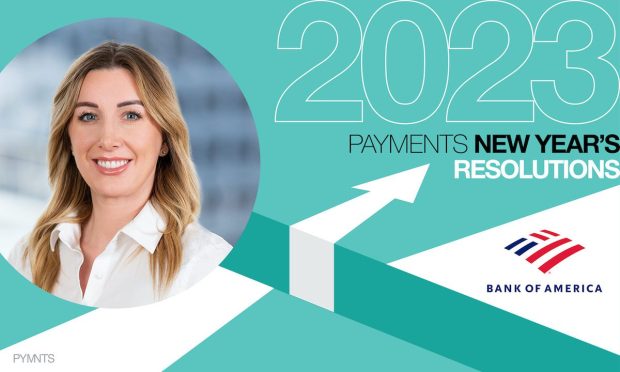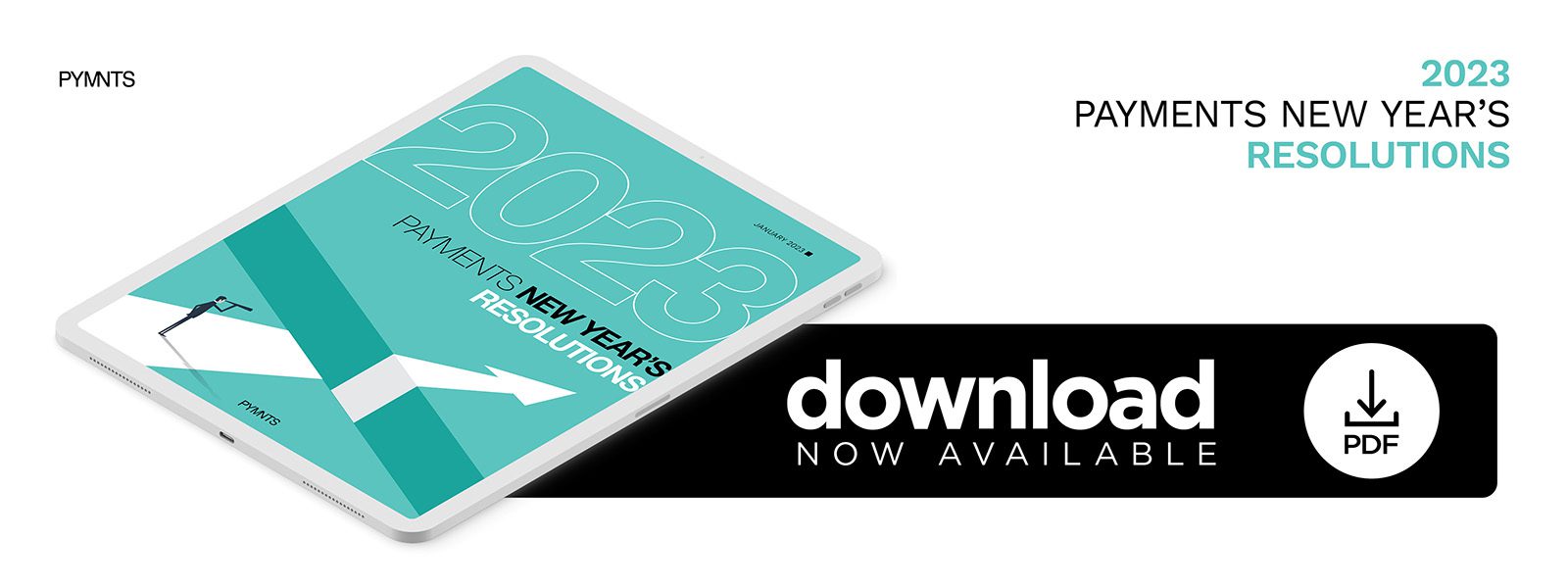Follow the Consumer for Payments Innovation, Says Bank of America’s Innovation Chief

Consumer behavior will continue to drive payments innovation, says Alexandra Johnson, head of bank Innovation at Bank of America, in the PYMNTS eBook, “2023 Payments New Year’s Resolutions.”
The unexpected and unpredictable are becoming more common than we previously thought normal. We head into another “unprecedented” year where COVID still lingers, the threat of a recession looms, interest rates are increasing and global cultural, environmental and economic conditions are volatile.
We can draw on past events to understand how consumer and corporate needs might evolve and how technological advancements could lead us into a new and exciting era. Additionally, we can expect consumer behavior to continue to drive payments innovation and acceleration in digitization to drive greater innovation in corporate treasury.
With the likely decrease in discretionary income and spending, the need for security, speed and transparency will be ever-important in payments — payers and payees want to know where their funds are and when they will arrive. Focusing on the continued expansion of real-time and faster payment offerings, including payment choice and account validation, will give businesses and consumers confidence in moving money and transacting regionally and across borders. Open banking and interoperability between payment schemes will be key since remittance volumes will continue to be resilient in an economic downturn, as will the need for real-time issuance and settlement for corporates.
As demand for speed and transparency of payments processing increases, we should expect an increase in fraud risk to follow. In anticipation, the industry should give equal priority to investing in fraud-prevention solutions that blockchain, artificial intelligence (AI) and machine learning back. It should be noted that enhanced processes for fraud protection can also improve STP and efficiency.
Should discretionary income decrease, consumers could benefit from flexible and on-demand payroll solutions and take advantage of alternative payment methods such as pay-by-bank, installment payments and other C2B alternatives that can help with cost management and savings through reduced chargebacks, greater speed and transparency of transactions for retailers.
Corporate treasury will continue on its path to digitization. Uncertain times accelerate the need for a company to adapt to changing economic conditions that have the potential to impact everything from payroll to capital expenditures and supply chain to cash management.
By moving to application programming interface (API) and blockchain-driven payment processes and cash-management functions, companies can adapt to changing times with limited additional investment required. This is especially pertinent in 2023 when companies will likely have less capital to put toward digitization and innovation agendas. As a result, it is incumbent on the payments industry (including banks and FinTechs) to meet our corporate customers “where they are” and think about how we can continue introducing new technologies that fit into their existing workflows.
Such innovations include embedded payments and payments-as-a-service offerings, allowing choice and flexibility. Other examples are real-time or just-in-time cash management and real-time views into payables and receivables.


